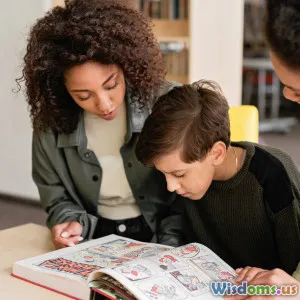
Innovative Teaching Methods for the Digital Age
5 min read Explore cutting-edge teaching methods that enhance learning in the digital age, empowering educators and students alike. (0 Reviews)
Innovative Teaching Methods for the Digital Age
In the rapidly evolving landscape of education, traditional teaching methods are being challenged by innovative approaches that leverage technology and engage students more effectively. As we navigate the digital age, educators are finding new ways to enhance learning experiences, making education more accessible, interactive, and enjoyable. This article explores several innovative teaching methods that are reshaping the educational environment.
1. Flipped Classrooms
The flipped classroom model is gaining traction as a powerful educational approach. In this method, students learn new concepts at home through video lectures and online resources, while class time is devoted to hands-on activities, discussions, and problem-solving exercises. This inversion of traditional teaching allows for deeper engagement and comprehension.
Benefits of Flipped Classrooms:
- Individualized Learning: Students can learn at their own pace, reviewing materials as needed.
- Enhanced Classroom Interaction: Class time focuses on collaboration and practical application of knowledge.
- Increased Accountability: Students take greater responsibility for their learning by preparing ahead.
2. Gamification
Gamification refers to the integration of game-like elements in educational settings to motivate and engage students. By incorporating challenges, rewards, and competition, educators can create an exciting learning atmosphere that fosters participation and enthusiasm.
Key Elements of Gamification:
- Points and Badges: Recognizing achievement encourages students to strive for excellence.
- Leaderboards: Friendly competition can enhance motivation and engagement.
- Interactive Challenges: Tasks that require critical thinking and creativity make learning more dynamic.
3. Blended Learning
Blended learning combines traditional face-to-face instruction with online learning experiences. This hybrid model allows students to benefit from direct teacher interaction while also enjoying the flexibility of online resources.
Advantages of Blended Learning:
- Flexibility: Students can learn from anywhere, at any time, accommodating diverse schedules.
- Personalized Learning Paths: Educators can tailor instruction to meet individual student needs.
- Technology Integration: Students develop digital literacy skills essential for the modern workforce.
4. Project-Based Learning (PBL)
Project-based learning emphasizes hands-on, real-world projects that require critical thinking, collaboration, and creativity. Students work on significant projects over extended periods, leading to deeper understanding and retention of knowledge.
Features of Project-Based Learning:
- Real-World Relevance: Students connect their learning to real-life situations, enhancing engagement.
- Collaboration: Working in teams fosters communication and interpersonal skills.
- Ownership of Learning: Students take charge of their learning process, leading to greater motivation.
5. Personalized Learning
Personalized learning tailors educational experiences to meet the individual needs, strengths, and interests of each student. Educators utilize data and technology to create customized learning paths that promote better outcomes.
Characteristics of Personalized Learning:
- Data-Driven: Assessments help identify student strengths and areas for improvement.
- Student-Centered: Learners have a say in their educational journey, increasing engagement.
- Variety of Resources: A range of materials and methods cater to diverse learning styles.
Conclusion
As we embrace the digital age, innovative teaching methods are vital for creating engaging and effective learning environments. By integrating approaches like flipped classrooms, gamification, blended learning, project-based learning, and personalized instruction, educators can empower students and prepare them for success in an increasingly complex world. These methods not only enhance educational outcomes but also foster a lifelong love of learning, ensuring that students are equipped for the challenges of tomorrow.
By adopting these innovative strategies, teachers can transform the classroom into a dynamic space where students are active participants in their education, ultimately leading to more meaningful and impactful learning experiences.
Rate the Post
User Reviews
Popular Posts





















